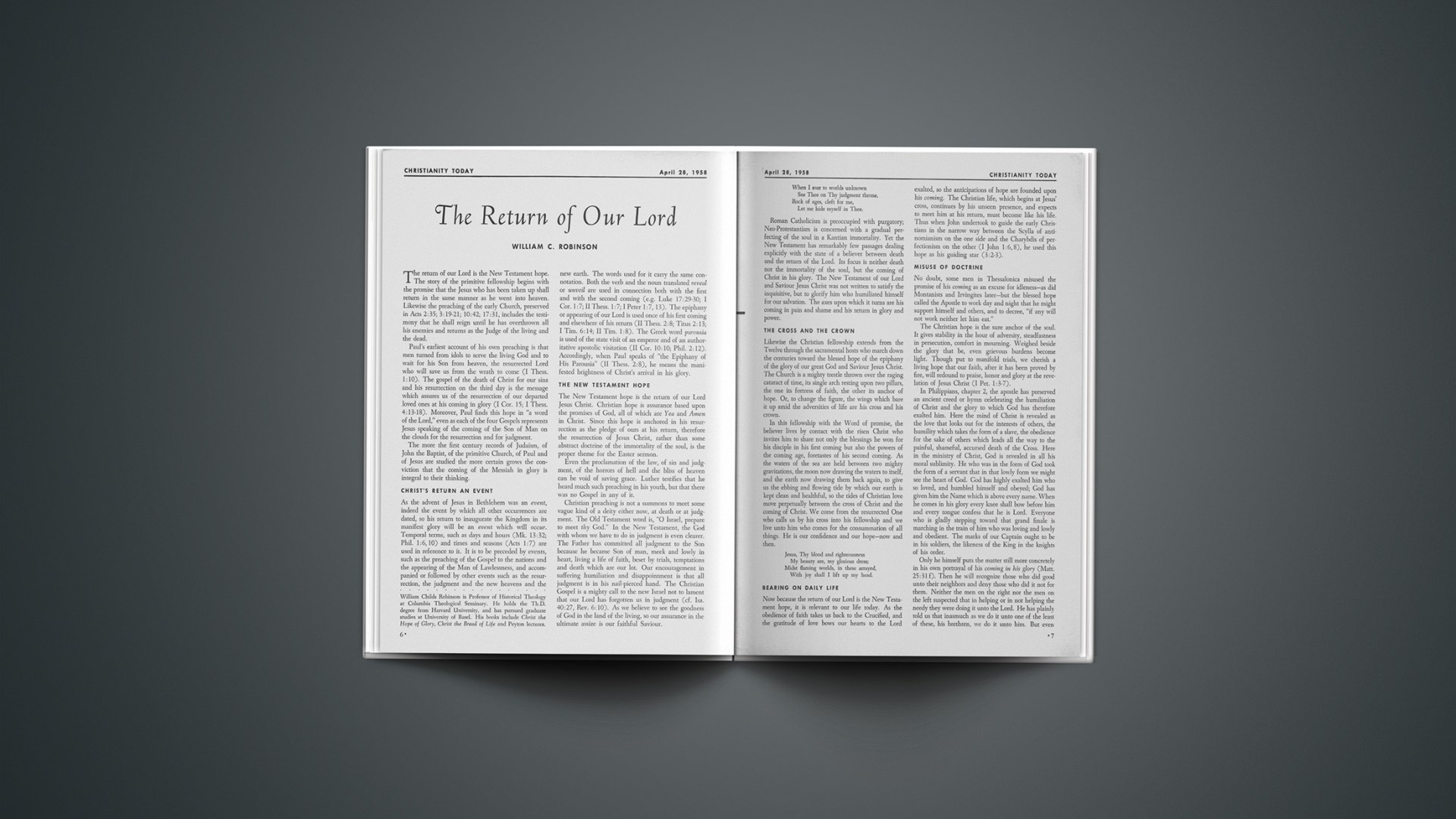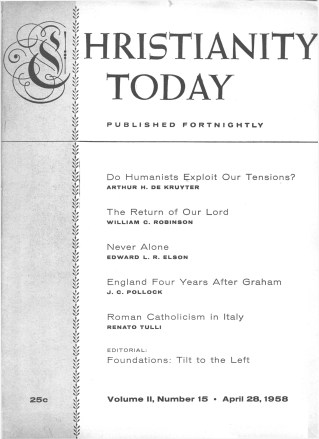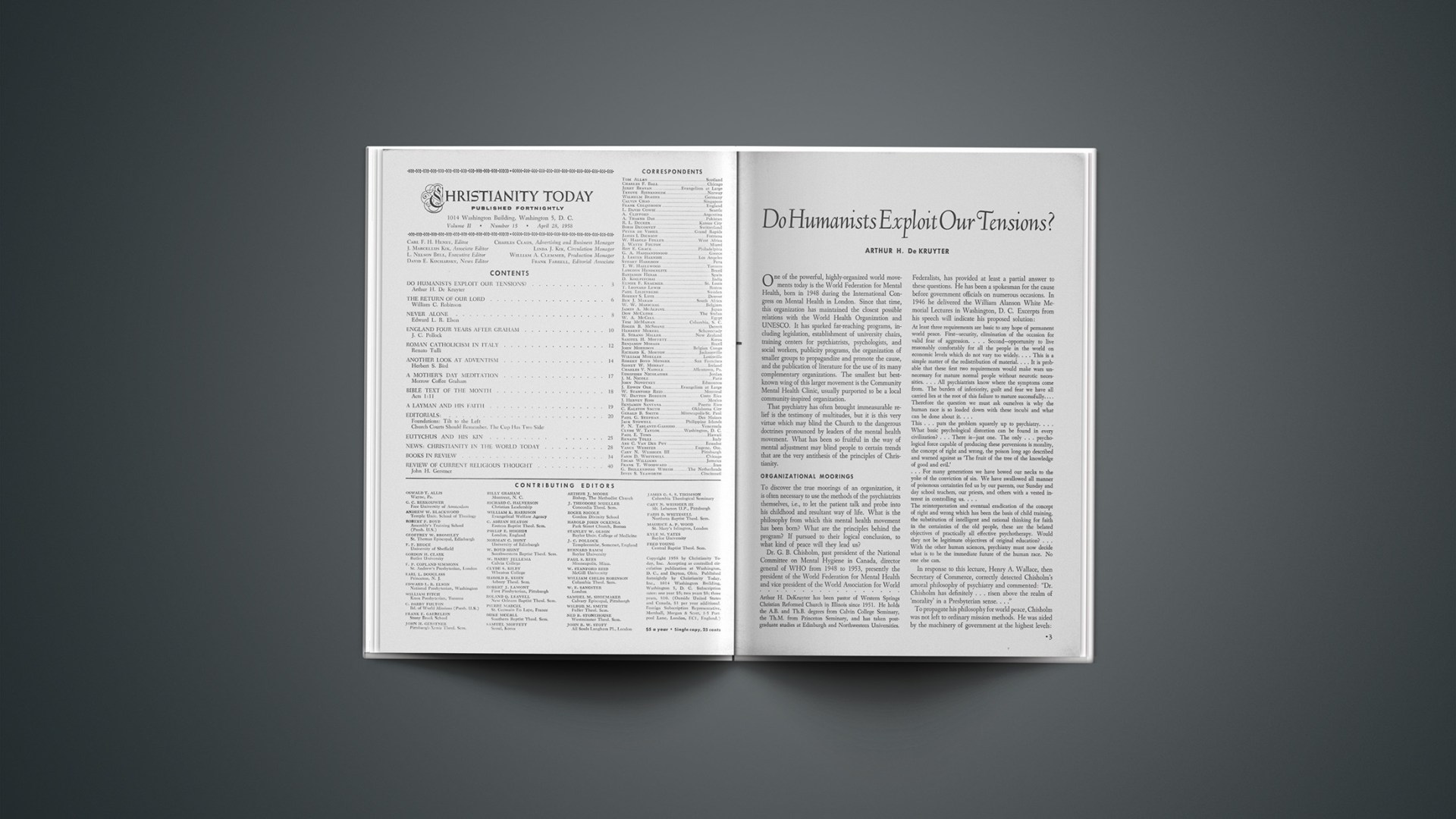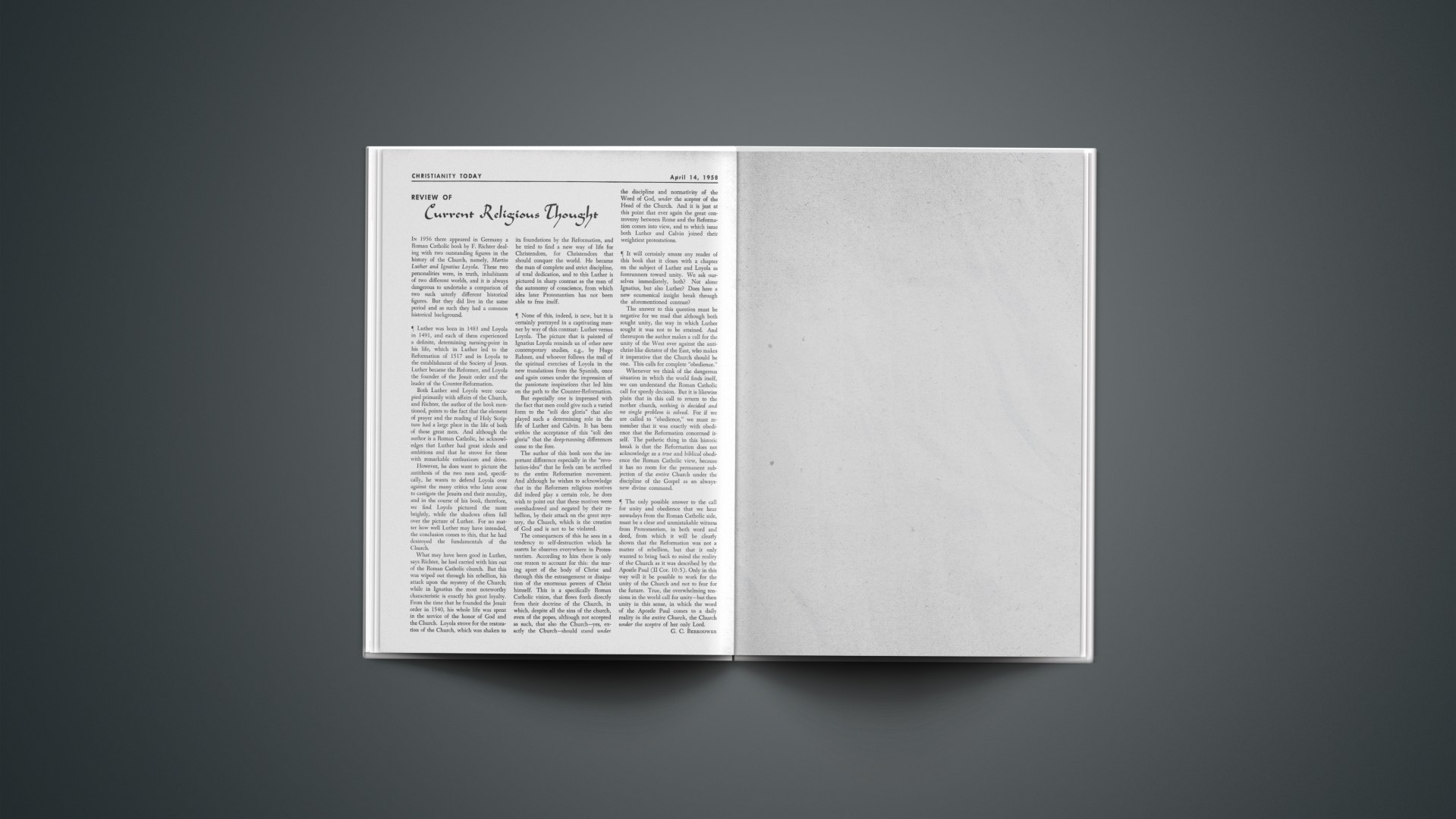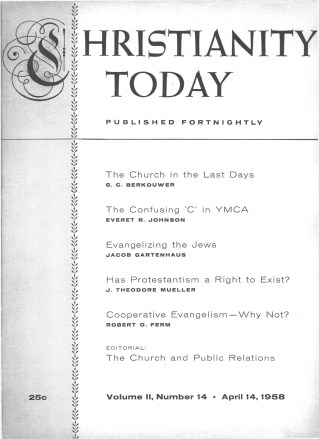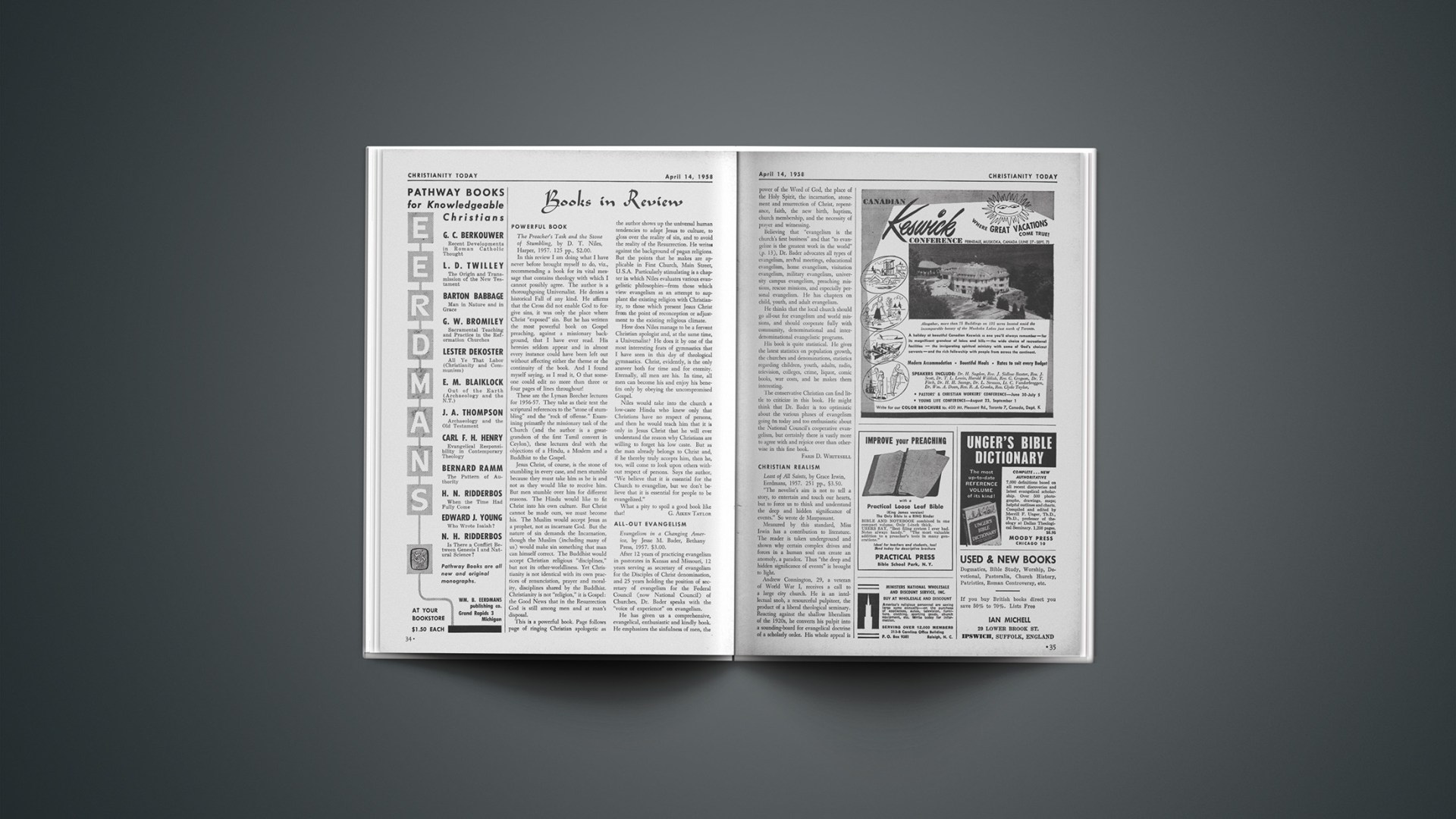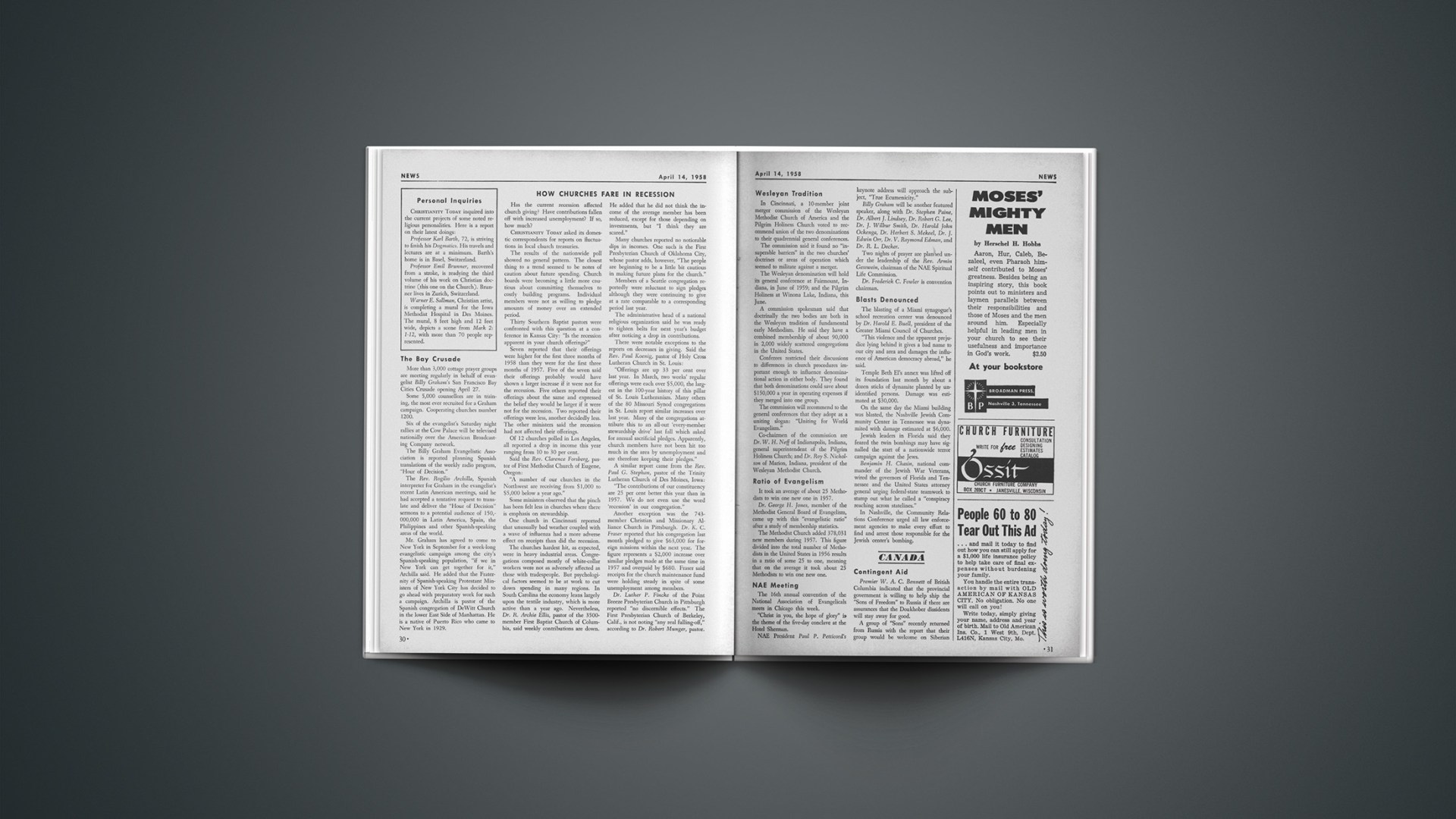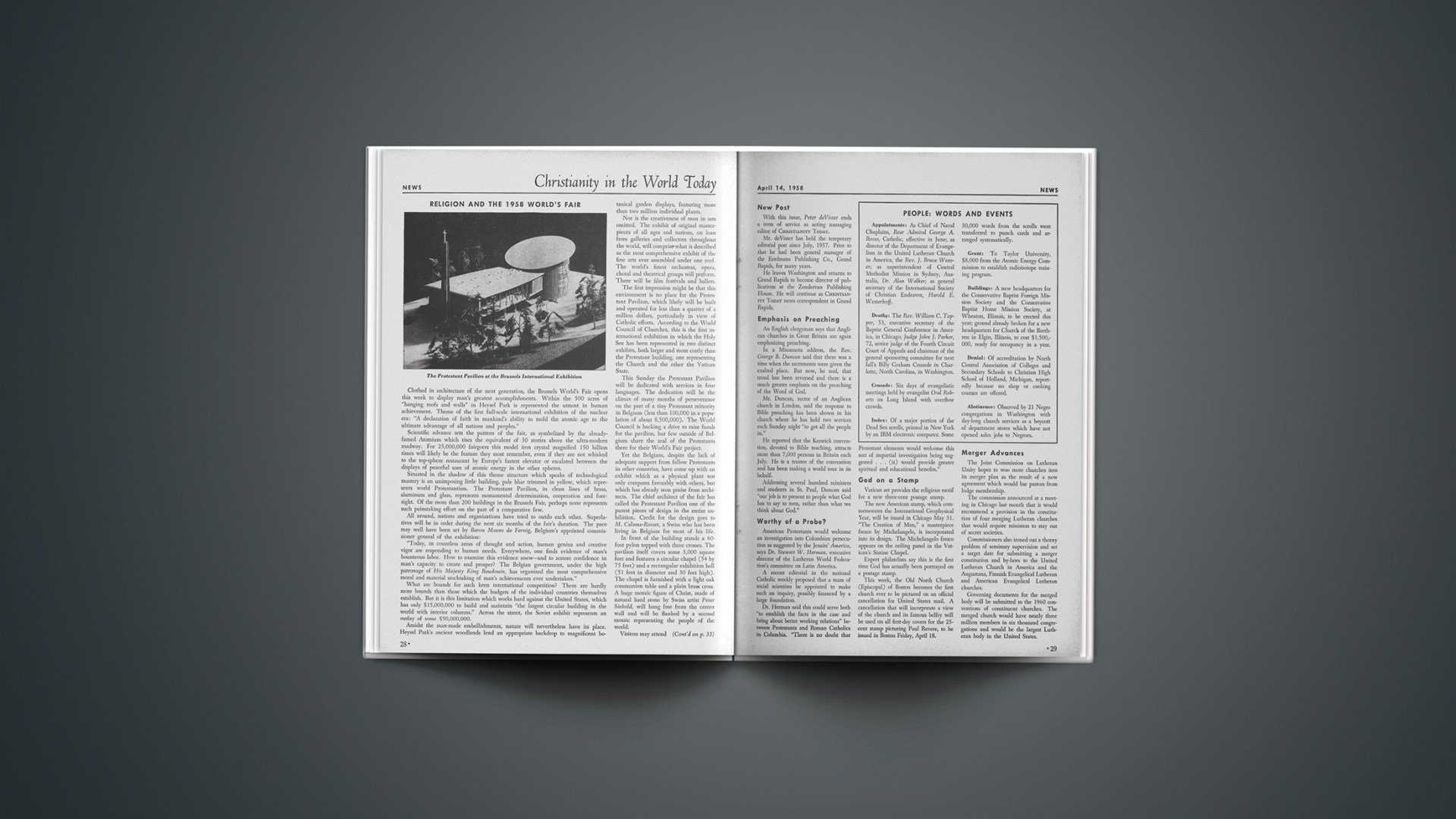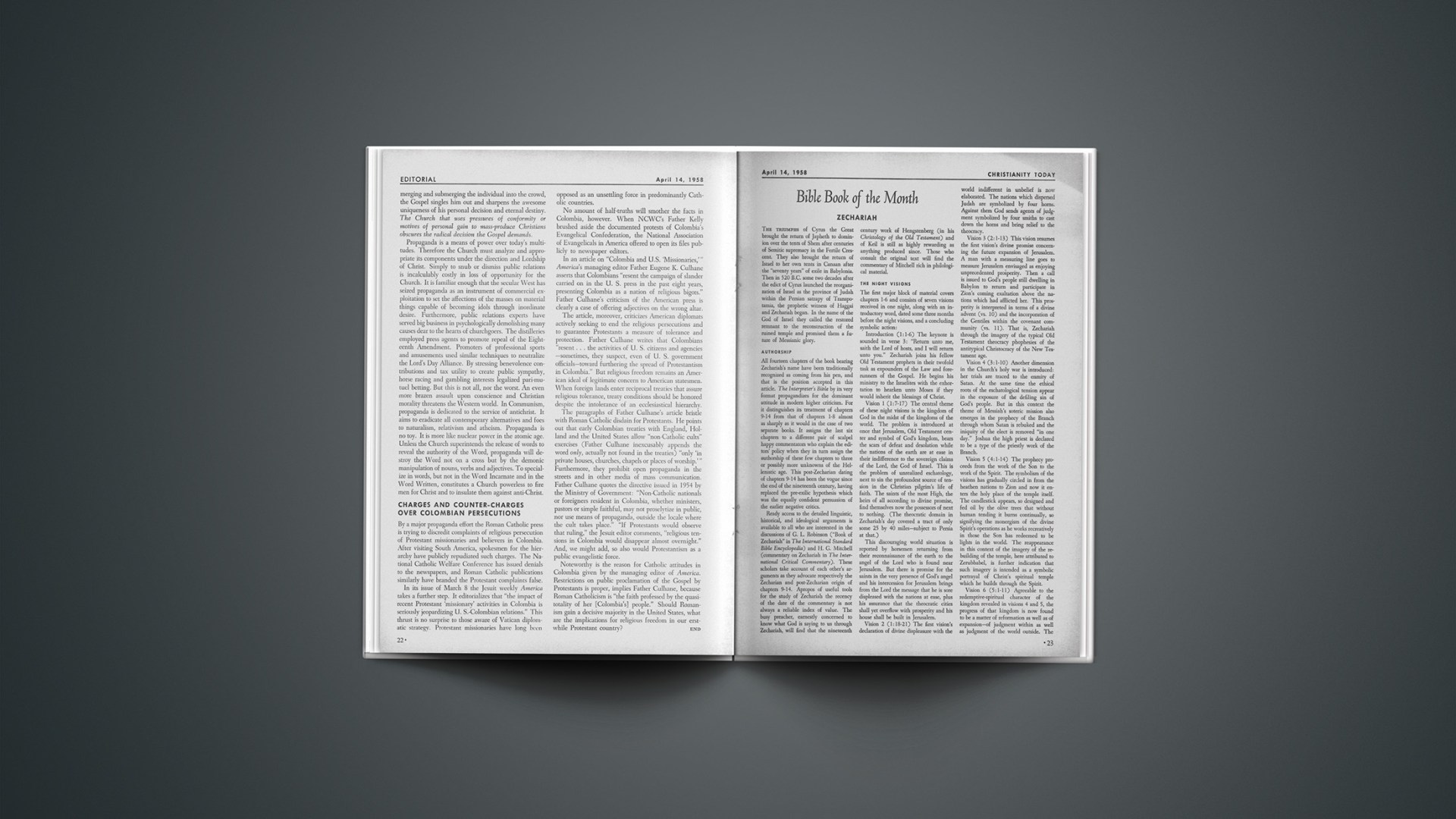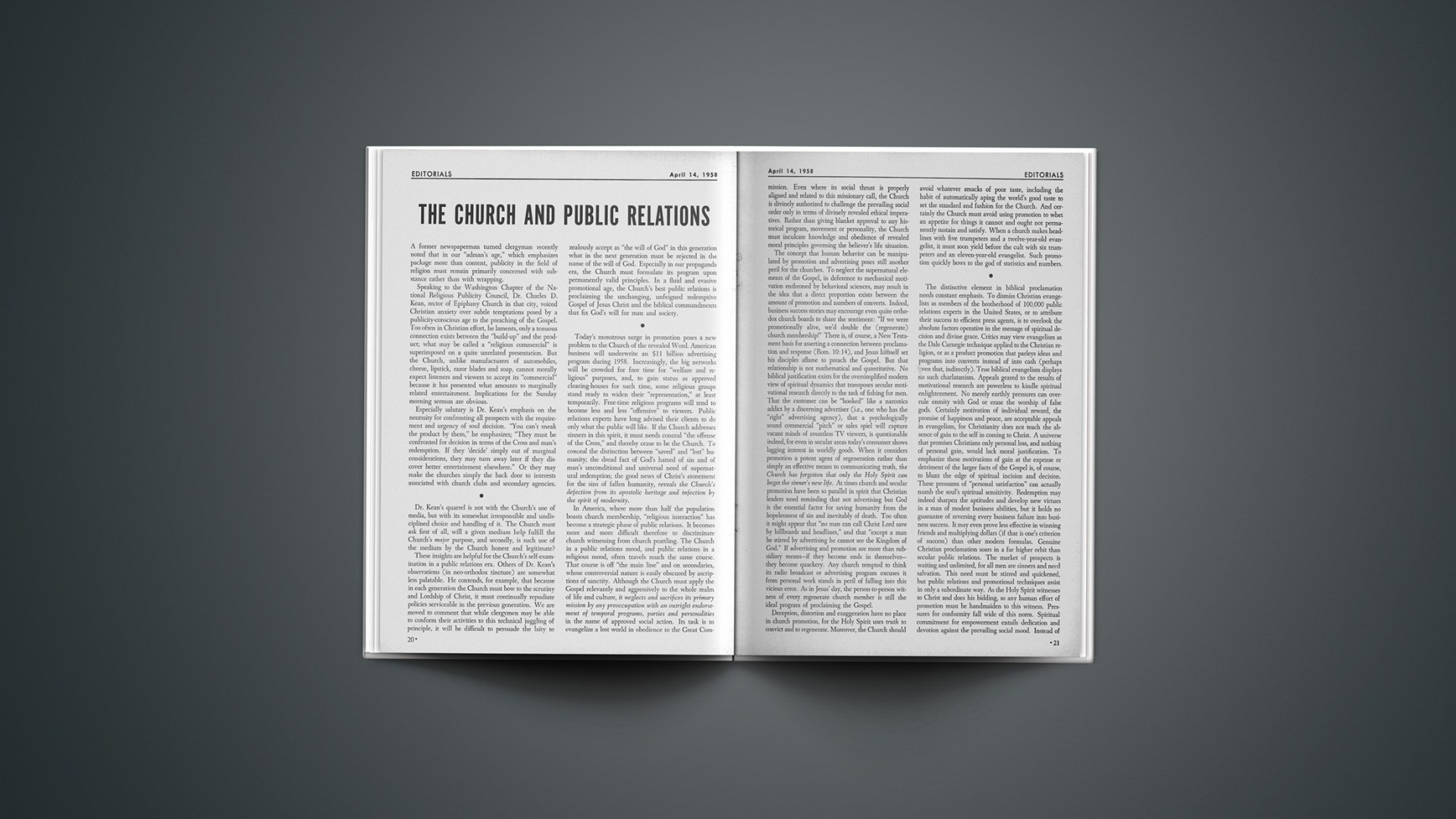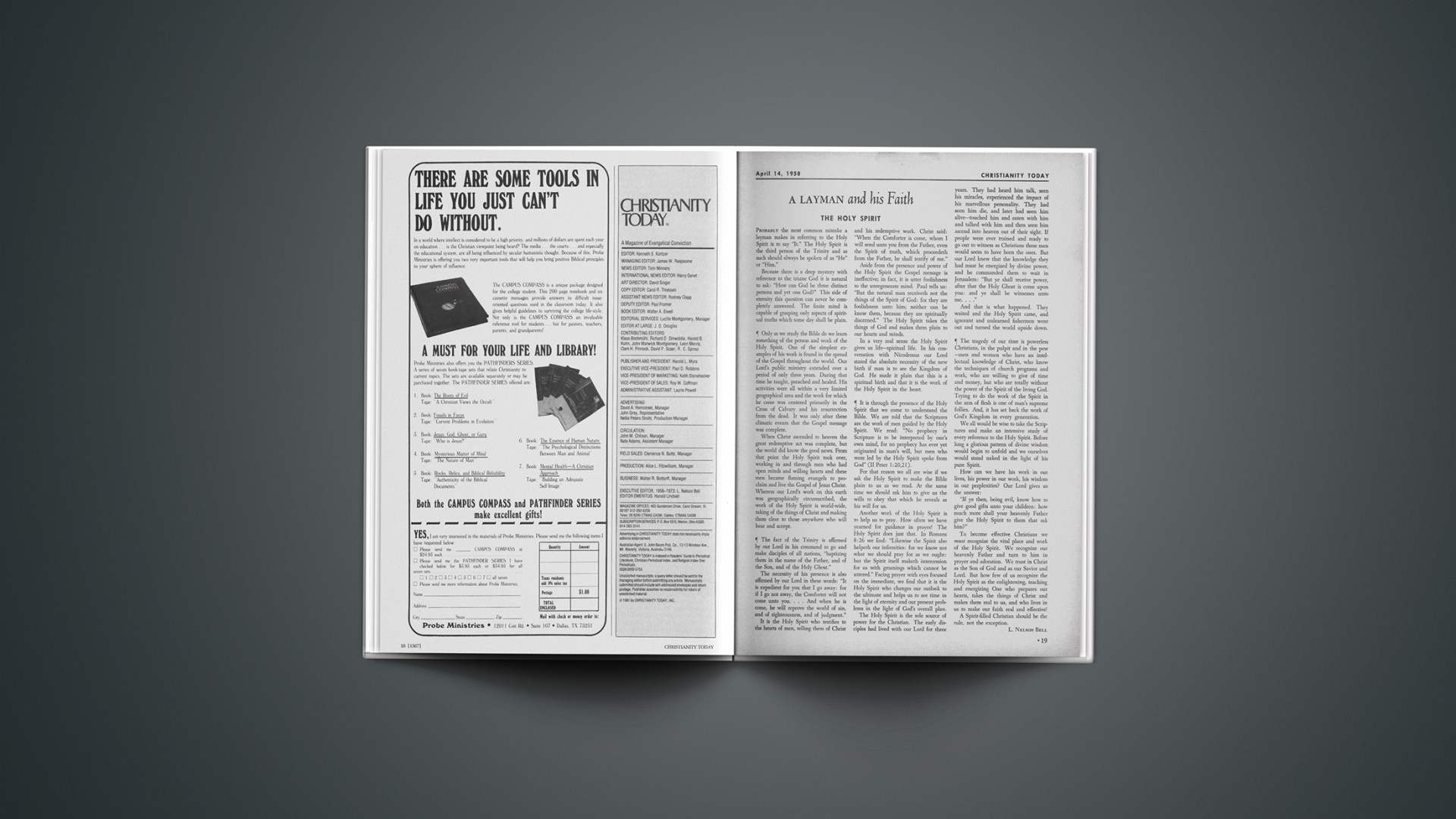The return of our Lord is the New Testament hope. The story of the primitive fellowship begins with the promise that the Jesus who has been taken up shall return in the same manner as he went into heaven. Likewise the preaching of the early Church, preserved in Acts 2:35; 3:19–21; 10:42; 17:31, includes the testimony that he shall reign until he has overthrown all his enemies and returns as the Judge of the living and the dead.
Paul’s earliest account of his own preaching is that men turned from idols to serve the living God and to wait for his Son from heaven, the resurrected Lord who will save us from the wrath to come (1 Thess. 1:10). The gospel of the death of Christ for our sins and his resurrection on the third day is the message which assures us of the resurrection of our departed loved ones at his coming in glory (1 Cor. 15; 1 Thess. 4:13–18). Moreover, Paul finds this hope in “a word of the Lord,” even as each of the four Gospels represents Jesus speaking of the coming of the Son of Man on the clouds for the resurrection and for judgment.
The more the first century records of Judaism, of John the Baptist, of the primitive Church, of Paul and of Jesus are studied the more certain grows the conviction that the coming of the Messiah in glory is integral to their thinking.
Christ’S Return An Event
As the advent of Jesus in Bethlehem was an event, indeed the event by which all other occurrences are dated, so his return to inaugurate the Kingdom in its manifest glory will be an event which will occur. Temporal terms, such as days and hours (Mk. 13:32; Phil. 1:6, 10) and times and seasons (Acts 1:7) are used in reference to it. It is to be preceded by events, such as the preaching of the Gospel to the nations and the appearing of the Man of Lawlessness, and accompanied or followed by other events such as the resurrection, the judgment and the new heavens and the new earth. The words used for it carry the same connotation. Both the verb and the noun translated reveal or unveil are used in connection both with the first and with the second coming (e.g. Luke 17:29–30; 1 Cor. 1:7; 2 Thess. 1:7; 1 Peter 1:7, 13). The epiphany or appearing of our Lord is used once of his first coming and elsewhere of his return (2 Thess. 2:8; Titus 2:13; 1 Tim. 6:14; 2 Tim. 1:8). The Greek word parousia is used of the state visit of an emperor and of an authoritative apostolic visitation (2 Cor. 10:10; Phil. 2:12). Accordingly, when Paul speaks of “the Epiphany of His Parousia” (2 Thess. 2:8), he means the manifested brightness of Christ’s arrival in his glory.
The New Testament Hope
The New Testament hope is the return of our Lord Jesus Christ. Christian hope is assurance based upon the promises of God, all of which are Yea and Amen in Christ. Since this hope is anchored in his resurrection as the pledge of ours at his return, therefore the resurrection of Jesus Christ, rather than some abstract doctrine of the immortality of the soul, is the proper theme for the Easter sermon.
Even the proclamation of the law, of sin and judgment, of the horrors of hell and the bliss of heaven can be void of saving grace. Luther testifies that he heard much such preaching in his youth, but that there was no Gospel in any of it.
Christian preaching is not a summons to meet some vague kind of a deity either now, at death or at judgment. The Old Testament word is, “O Israel, prepare to meet thy God.” In the New Testament, the God with whom we have to do in judgment is even clearer. The Father has committed all judgment to the Son because he became Son of man, meek and lowly in heart, living a life of faith, beset by trials, temptations and death which are our lot. Our encouragement in suffering humiliation and disappointment is that all judgment is in his nail-pierced hand. The Christian Gospel is a mighty call to the new Israel not to lament that our Lord has forgotten us in judgment (cf. Isa. 40:27; Rev. 6:10). As we believe to see the goodness of God in the land of the living, so our assurance in the ultimate assize is our faithful Saviour.
When I soar to worlds unknown
See Thee on Thy judgment throne,
Rock of ages, cleft for me,
Let me hide myself in Thee.
Roman Catholicism is preoccupied with purgatory; Neo-Protestantism is concerned with a gradual perfecting of the soul in a Kantian immortality. Yet the New Testament has remarkably few passages dealing explicitly with the state of a believer between death and the return of the Lord. Its focus is neither death nor the immortality of the soul, but the coming of Christ in his glory. The New Testament of our Lord and Saviour Jesus Christ was not written to satisfy the inquisitive, but to glorify him who humiliated himself for our salvation. The axes upon which it turns are his coming in pain and shame and his return in glory and power.
The Cross And The Crown
Likewise the Christian fellowship extends from the Twelve through the sacramental hosts who march down the centuries toward the blessed hope of the epiphany of the glory of our great God and Saviour Jesus Christ. The Church is a mighty trestle thrown over the raging cataract of time, its single arch resting upon two pillars, the one its fortress of faith, the other its anchor of hope. Or, to change the figure, the wings which bare it up amid the adversities of life are his cross and his crown.
In this fellowship with the Word of promise, the believer lives by contact with the risen Christ who invites him to share not only the blessings he won for his disciple in his first coming but also the powers of the coming age, foretastes of his second coming. As the waters of the sea are held between two mighty gravitations, the moon now drawing the waters to itself, and the earth now drawing them back again, to give us the ebbing and flowing tide by which our earth is kept clean and healthful, so the tides of Christian love move perpetually between the cross of Christ and the coming of Christ. We come from the resurrected One who calls us by his cross into his fellowship and we live unto him who comes for the consummation of all things. He is our confidence and our hope—now and then.
Jesus, Thy blood and righteousness
My beauty are, my glorious dress;
Midst flaming worlds, in these arrayed,
With joy shall I lift up my head.
Bearing On Daily Life
Now because the return of our Lord is the New Testament hope, it is relevant to our life today. As the obedience of faith takes us back to the Crucified, and the gratitude of love bows our hearts to the Lord exalted, so the anticipations of hope are founded upon his coming. The Christian life, which begins at Jesus’ cross, continues by his unseen presence, and expects to meet him at his return, must become like his life. Thus when John undertook to guide the early Christians in the narrow way between the Scylla of antinomianism on the one side and the Charybdis of perfectionism on the other (1 John 1:6, 8), he used this hope as his guiding star (3:2–3).
Misuse Of Doctrine
No doubt, some men in Thessalonica misused the promise of his coming as an excuse for idleness—as did Montanists and Irvingites later—but the blessed hope called the Apostle to work day and night that he might support himself and others, and to decree, “if any will not work neither let him eat.”
The Christian hope is the sure anchor of the soul. It gives stability in the hour of adversity, steadfastness in persecution, comfort in mourning. Weighed beside the glory that be, even grievous burdens become light. Though put to manifold trials, we cherish a living hope that our faith, after it has been proved by fire, will redound to praise, honor and glory at the revelation of Jesus Christ (1 Pet. 1:3–7).
In Philippians, chapter 2, the apostle has preserved an ancient creed or hymn celebrating the humiliation of Christ and the glory to which God has therefore exalted him. Here the mind of Christ is revealed as the love that looks out for the interests of others, the humility which takes the form of a slave, the obedience for the sake of others which leads all the way to the painful, shameful, accursed death of the Cross. Here in the ministry of Christ, God is revealed in all his moral sublimity. He who was in the form of God took the form of a servant that in that lowly form we might see the heart of God. God has highly exalted him who so loved, and humbled himself and obeyed; God has given him the Name which is above every name. When he comes in his glory every knee shall bow before him and every tongue confess that he is Lord. Everyone who is gladly stepping toward that grand finale is marching in the train of him who was loving and lowly and obedient. The marks of our Captain ought to be in his soldiers, the likeness of the King in the knights of his order.
Only he himself puts the matter still more concretely in his own portrayal of his coming in his glory (Matt. 25:31 f). Then he will recognize those who did good unto their neighbors and deny those who did it not for them. Neither the men on the right nor the men on the left suspected that in helping or in not helping the needy they were doing it unto the Lord. He has plainly told us that inasmuch as we do it unto one of the least of these, his brethren, we do it unto him. But even though he tells us we do not seem to take it in. On that great day we shall all speak in surprise. Some are surprised that in doing kind deeds they did it unto him. Others are shocked that the Lord should have been that neighbor whom they neglected. But here again love, kindness, consideration, helpfulness, the needs of others are the marks of those who belong to him who came not to be ministered unto but to minister and to give his life a ranson for many. When we shall see him, we shall be like him; for we shall see him as he is.
William Childs Robinson is Professor of Historical Theology at Columbia Theological Seminary. He holds the Th.D. degree from Harvard University, and has pursued graduate studies at University of Basel. His books include Christ the Hope of Glory, Christ the Bread of Life and Peyton lectures.

